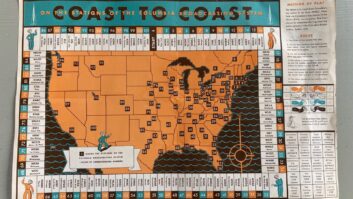As radio’s business and technical leaders arrive in Austin, the industry appears to be at an inflection point. The trouble is that by conventional revenue measures, the inflection has been in the wrong direction.
Meanwhile, money coming in from everything except radio commercials has been growing. While off-air remains a smaller piece of radio’s income than traditional bucks, it could soon pass $2 billion a year, according to one estimate. That reality has put the focus on online revenue and other new media tools and tricks.
“The thought that online broadcasting could replace broadcasters’ over-the-air business is a pipe dream,” says Bob Struble, the president, CEO and chairman of iBiquity Digital Corp.
“There are tremendously exciting online businesses developing,” he acknowledged in his blog recently, including “the CBS/AOL distribution deal, the Clear Channel/Katz online network, Emmis’s Interactive efforts and many more online efforts by broadcasters big and small. And revenue is beginning to flow. … But radio broadcasters are also pipe owners. The spectrum assignment each station has is some of the most valuable real estate imaginable.”
Nevertheless, how to incorporate all those new pipes into radio’s existing plumbing is likely to be a key topic of discussion here. Trends are reflected in The NAB Radio Show, where convention chair Steve Goldstein, the executive vice president of Saga Communications, has led an expansion of new media content in the sessions.
“We all know it is different out there in the radio business,” he said. “New media is impacting programming and sales strategies, and it’s forcing us to rethink a lot of our business.” Symbolically, radio guy Goldstein made that comment in a video pop-up promotion on the NAB’s own show Web site.
It’s just this kind of multiplatform cross-pollination that is likely to define radio’s marketing and financial strategies in coming years.
“I think we’ve crossed that divide,” said Mike Agovino, chief operating officer of Triton Media Group, who will speak at the “New Media Executives Super Session.” The industry, he believes, has gone from “where digital was more opportunistic and experimental to radio, to where the majority of operators are viewing it as a necessity.”
Chris Redgrave feels this is a time of flux and says broadcaster strategies need to be built around the new consumer.
“It’s all about the ‘Millennials,’ the under-30 audience,” said Redgrave, general manager of Bonneville Broadcasting’s Salt Lake City cluster and a member of the convention’s Management Subcommittee. “This is the group that radio has to attract in order to remain viable.”
‘HARSH PROSPECTS’
Optimism inherent in the talk about new media, however, must be tempered by business reality. U.S. radio sales are down, according to the Radio Advertising Bureau (the same organization that estimates off-air money will grow to $2 billion this year).
“Radio has entered and seems stuck in a new, discouraging territory with the combined challenges of a secular slide and cyclical recessionary times,” wrote Jim Boyle, senior analyst and senior vice president of CL King & Associates in August. “The industry’s larger groups do not appear ready to institute revolutionary changes yet in sales, programming, promotion or station clusters. There is a notable sense of denial of how harsh the prospects have been and continue to be for radio.” Ouch.
But headlines about radio tend to be written by its critics. The medium retains a vast and diversified infrastructure, powerful local brand identification and a continuing strong presence on Capitol Hill.
To be seen is whether the industry will map a new business route around soft revenue, rising content costs, failure to prevent a satellite merger and a turbulent economy — and rewrite those headlines into a media comeback story.a
— Craig Johnston and Jim Withers contributed to this article.
©NAB










